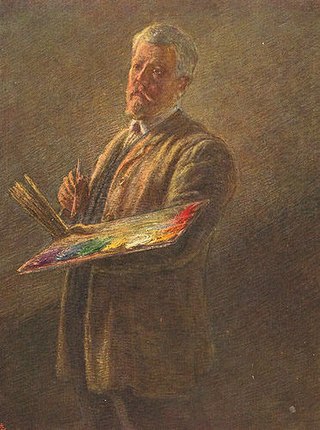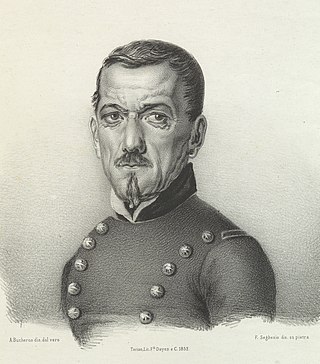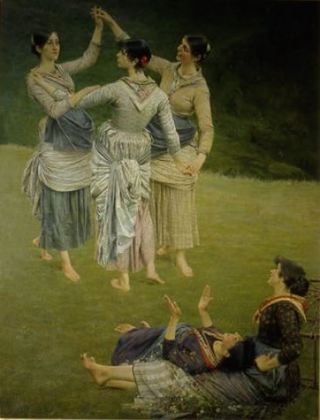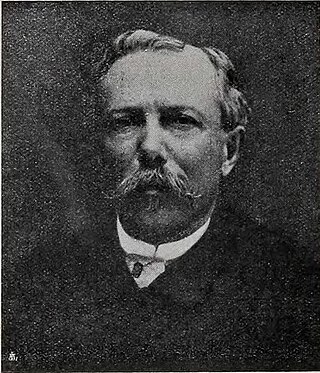Related Research Articles

Liberty style was the Italian variant of Art Nouveau, which flourished between about 1890 and 1914. It was also sometimes known as stile floreale, arte nuova, or stile moderno. It took its name from Arthur Lasenby Liberty and the store he founded in 1874 in London, Liberty Department Store, which specialized in importing ornaments, textiles and art objects from Japan and the Far East. Major Italian designers using the style included Ernesto Basile, Ettore De Maria Bergler, Vittorio Ducrot, Carlo Bugatti, Raimondo D'Aronco, Eugenio Quarti, and Galileo Chini.

Vincenzo Vela was a Swiss-Italian sculptor, active mainly in northern Italy.

Plinio Nomellini was an Italian painter in the Divisionist style.

Gaetano Previati (1852–1920) was an Italian Symbolist painter in the Divisionist style.

Francesco Paolo Michetti was an Italian painter known especially for his genre works.

Angelo Boucheron was an Italian painter and engraver.
Riccardo Pasquini was an Italian painter.

Filadelfo Simi was an Italian painter and sculptor.
Augusto Sezanne was an Italian painter, active in a Naturalist style of landscape painting. He also worked as engraver, ceramist, and even as architect.
Salvatore Postiglione was an Italian painter, mainly of portraits, and historic and genre subjects, in a Realist style.

Ernesto Pochintesta was an Italian painter, active as a landscape artist and watercolor painter in a Realist style.

Calcedonio Reina was an Italian painter and poet. He is described as having a melancholic and neurasthenic temperament in life and art.
Maurizio Pellegrini was an Italian painter and lawyer.
Oreste Silvestri was an Italian painter.
Emanuele Serrano was an Italian sculptor, mainly in terracotta.

Luigi Serra was an Italian painter, known for his watercolors.

Federigo or Federico Rossano was an Italian painter in a Realist style.
Daphne Mabel Maugham later Daphne Maugham-Casorati (1897–1982) was a British painter, who emigrated to Turin, Italy.

Enrico Cavalli was an Italian post-impressionist painter.
Vincenzo La Bella was an Italian painter. He worked on costume painting, portraiture, interior decoration, illustration, lithography, poster design, and art criticism.
References
- ↑ Pittura e scultura in Piemonte 1842-1891: Catalogo cronografico illustrato della Esposizione Retrospettiva 1892., A. Stella, Stamperia Reale della ditta G.B. Paravia e Compagnia. Turin, 1893, pages 497-499.
- ↑ ‘‘Dizionario degli Artisti Italiani Viventi: pittori, scultori, e Architetti.’’, by Angelo de Gubernatis. Tipe dei Successori Le Monnier, 1889, page 499.